Subject lines are the key to higher engagement and deliverability in email marketing, especially with SMTP protocols. In this blog, we’ll cover five tips to create subject lines that boost open rates, keep emails out of spam folders, and drive real connections with your audience.
Crafting Subject Lines That Engage and Deliver: Top Tips for SMTP Success
The Importance of Subject Lines in Email Marketing
Subject lines are the first impression your emails make, and they significantly impact whether or not your emails are opened, read, and acted upon. Using SMTP protocols to send your emails? Crafting subject lines that are effective and optimized is key to keeping your emails out of the spam folder and maximizing deliverability. Below, we’ll explore five practical tips to create subject lines that engage and get results.
Tip #1. Personalize Your Subject Line
Personalized subject lines create a connection by speaking directly to each recipient, setting your email apart from the generic ones filling their inbox. By including your audience’s name or details specific to their interests, your emails will stand out, helping to increase open rates and reduce spam complaints.
In addition to increased opens, personalized subject lines help maintain a positive sender reputation with SMTP providers, as your audience is more likely to engage and less likely to mark your email as spam.
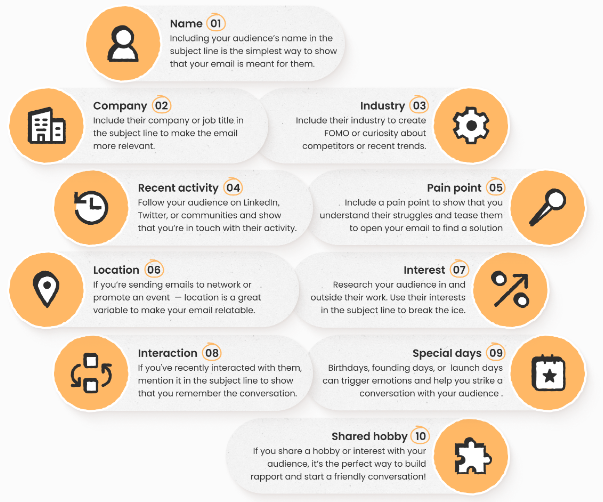
Tip #2. Keep Subject Lines Short and Clear
Clear, concise subject lines grab attention and convey value instantly, making your emails more enticing to open. Ideally, aim for a subject line length between 6 and 10 words, ensuring it stays readable across all devices.
Consider these questions to ensure clarity in your subject lines:
- Does it focus on one specific idea?
- Is there a clear benefit for the reader?
- Is personalization included?
- Is it free from jargon or complicated terms?
- Does it align with the email content?
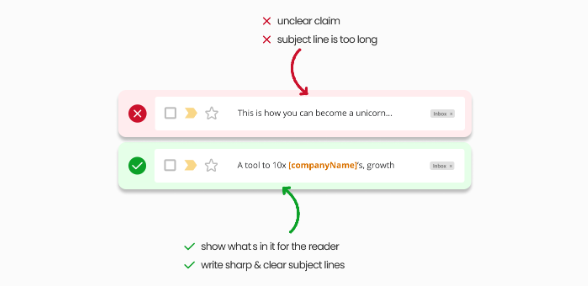
Tip #3. Avoid Spam Trigger Words
Spam words in subject lines can trigger filters and hurt your deliverability, reducing credibility and limiting engagement. Avoid phrases that sound overly promotional or “too good to be true,” and aim for a natural, conversational tone in your subject line.
Ways to Avoid Spam Triggers:
- Don’t use all caps in your subject line
- Personalize subject lines with audience-specific details
- Experiment with different versions (A/B testing)
- Limit special characters (e.g., %, !!, ??)
- Avoid common spam trigger words and phrases
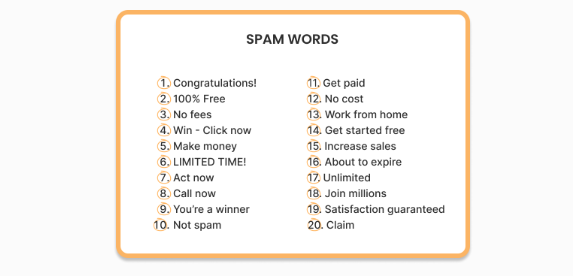
Tip #4. A/B Test Your Subject Lines
A/B testing helps you identify what resonates best with your audience by comparing different subject line versions. Run tests by sending two variations to different segments, then analyze open rates, click-throughs, and replies to determine which one is more effective.
By learning what works best, A/B testing helps you fine-tune your subject lines to maximize open rates and engagement for future SMTP campaigns.
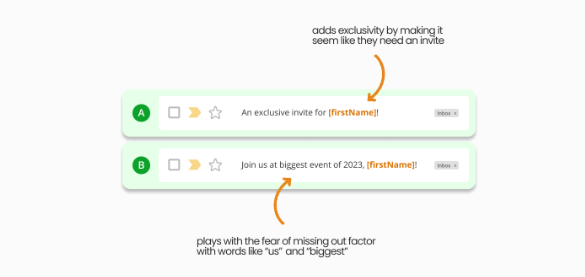
Tip #5. Make Subject Lines Actionable
Actionable subject lines convey that readers will gain something tangible—whether it’s tips, a solution, or valuable information. When you frame your subject line as a way to add value, you’ll boost open rates and inspire readers to engage with your content.
Action-oriented language can also help your emails stand out, as recipients are more likely to respond to messages with a clear benefit or call to action.
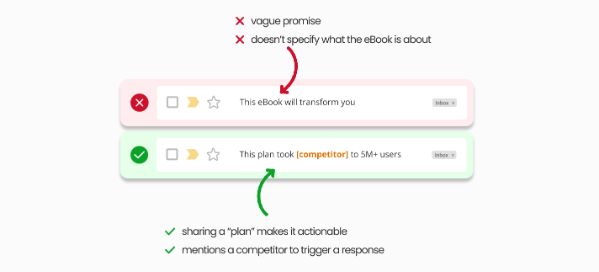
By applying these five proven strategies to your subject lines, you can significantly boost your email open rates, improve deliverability, and reduce the risk of landing in spam folders. Whether you’re personalizing, testing, or keeping things clear and concise, these tips will help you create subject lines that resonate with your audience and enhance your SMTP email marketing success.